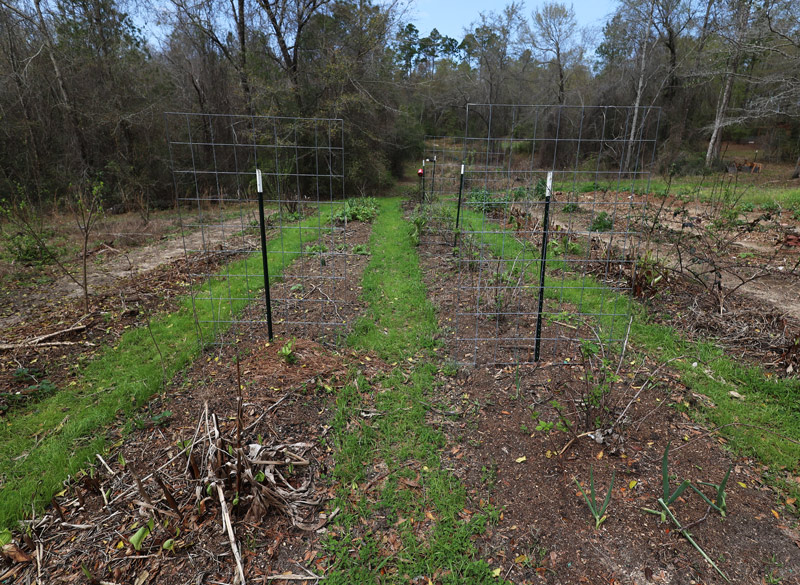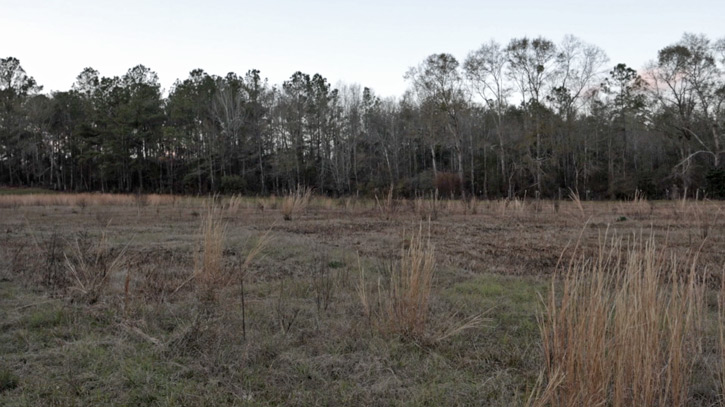Michelle writes:
David, your comment about strawberries as ground cover made me wonder about this as a strategy in the grocery rows. What mix of annuals vs perennials might be most beneficial? Are there benefits and drawbacks to one or the other?
Everything depends on your climate and what you want from your Grocery Row Garden.
Mixing up Species in a Grocery Row Garden
I don’t like to extensively plan my gardens or prescribe exact mixes of species. We planted strawberries last year to see how they would do here in Alabama. They’re spread out underneath a few trees in the Grocery Row Gardens and are doing well. Sweet potatoes also did very well. I have mint in another bed that has covered the ground, and in a portion of last year’s GRG gardens we had a long stretch of sprawling Everglades tomato plants acting as a ground cover. I’ve also grown clover, turnips, mustard, black-eyed peas, gingers and even a pumpkin vine in the ground cover layer.
If there’s a low-growing plant you like, give it a try. My favorite strategy is to just plant a bunch of different things together, roughly sorting them out by growth habit and where they fit in the vertical layers (short? tall? vining? creeping?) and provide a yield. If anything runs over something else too much it gets chopped back.
If you are in a tropical climate, you will have different species and mixes than in a temperate climate.
Down in Grenada, our top layer was mostly bananas and plantains and papaya, with a middle layer of cassava and edible hibiscus and amaranth, with leaf vegetables and beans and taro and sweet potatoes for the ground cover layer.

Here in a more temperate climate, we have pears and apples and stone fruit for the top layer, with blueberries, raspberries, blackberries and other crops for the middle layer, with white potatoes, brassicas and sweet potatoes for the ground cover. And strawberries!
As for the benefits or drawbacks of annuals and perennials, this video may be useful:
Kelli writes:
What about walk-on-me thyme or other tough ground cover that’s useful instead of grass?
This is regarding the pathways which I planted with rye grass and clover.

Sure, why not? I just had a nice cover mix and was thinking of something I could graze chickens on later; though I never got around to making a small chicken tractor to run down the rows. My friend Elizabeth planted the rows between her beds with sweet potatoes and they did remarkably well.
Watering Fruit Trees
Ed writes:
How much water the small new tree and big tree should get per day? And is it bad when e.g. I put too much water every day?
Yes, too much water will rot a tree’s roots, especially in heavy clay soils. If you have a trickle running at one corner of a tree’s root zone, it will happily get all the water it needs from that area. In most soils if you pour a five-gallon bucket of water at the base of a newly planted tree every day or two for the first few weeks, it ought to do well. Or run your hose on a drip through the day.
The important thing to make fruit trees grow fast is to make sure they aren’t starved for water. That’s more common than having them get too much water.
Today I’m headed out to the watermelon field to cut the grass and get ready to till. We looked it over yesterday and it needs a mowing.
It’s a nice, big area and we need to get started. This is where we’ll plant watermelons primarily, and probably some pumpkins and corn.

Everything happens at once in spring – gotta get rolling!
You can learn how to start Grocery Row Gardening in my little book on the topic – it’s now only $9.99.


1 comment
Thanks!
Comments are closed.